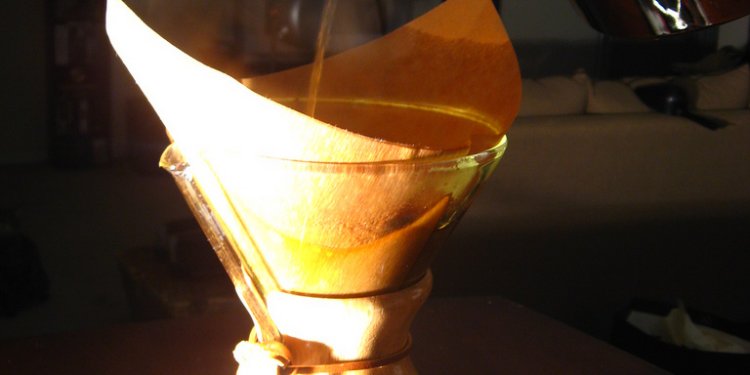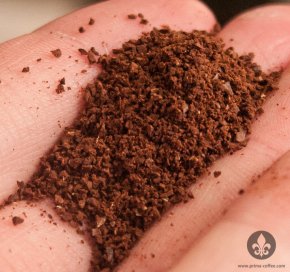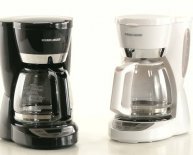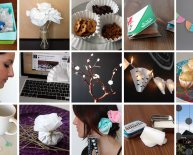
Filter coffee kettle
The V60 is a cone-shaped dripper with spiral ridges over the inner wall and a single, huge opening at the bottom. This design keeps the filter from sticking to the walls of the cone, encouraging removal in the bottom and sides of regarding the filter. We carry the V60 in 2 sizes, four colors, and three materials: plastic, glass, or porcelain.
Grind
We generally recommend a grind setting between fine and moderate.
Strategy
Our preferred method begins with completely rinsing the filter and placing it inside cone. After adding floor coffee, level the sleep and then make a tiny divot in the middle. Concentrating on this depression, pour adequate water to damp the coffee, after that sleep for 30 seconds. Carry on pouring slowly, beginning at the center and moving in and in concentric groups until the desired volume is achieved. Keep carefully the moving liquid about ¼" away from the uncovered wall space for the dripper always and try to preserve a consistent volume through the entire brewing procedure.
Advantage
V60 filters are thinner than just about any various other paper pour over filters, and also this is a huge plus. While we nevertheless recommend rinsing these filters, they impart minimal paper style — if any whatsoever. The unique design regarding the V60 yields among the better coffee we’ve ever had. When one pours carefully, the spiral ridges on V60 enhance a more also extraction than other cone-shaped brewers, which usually over-extract at the end. Along with the glass or plastic V60 you can view the whole brewing process.
We particularly appreciate using the V60 with bright, fruity, and flowery coffees. Typically, coffees from Kenya, Costa Rica, El Salvador, and Guatemala taste their finest whenever brewed using this technique. Take a look at our V60 directories for more information.
Design
The Chemex combines a pour over filter cone with a beautiful cup decanter. The determining feature for this technique is an ultra dense report filter set flush resistant to the walls.
We generally speaking recommend a medium or medium-coarse grind setting.
Begin by carefully rinsing the filter. This eliminates papery style and preheats the server. After dumping this water, include ground coffee and even the bed. Make use of warm water to evenly wet all the coffee (using about 10% of the complete water volume) and commence a timer. After 30-45 seconds pour other water in a slow and managed movement. Make an effort to complete pouring around the 3:00 level, because of the last fall falling somewhere near 4:00. Toss the filter and reasons, give the Chemex some swirls, and serve.
Due to the fact dense report filter sits flush from the walls of this server, liquid flows through grounds much more slowly while the dwell time is longer than various other afin de over practices. This is certainly helpful, as brewing a very tasty cup is less dependent on the skill associated with the user plus on accurate and well-chosen parameters. The Chemex highlights the "higher" and "brighter" records in coffee and yields a clean, nice cup.
The Kone is a material, cone-shaped afin de over filter created for use in a Chemex server. Lasers slashed tiny holes in stainless steel to help keep coffee grounds split up through the end up, all the while allowing made coffee to flow in to the server.

We typically recommend a grind environment which between those employed for the V60 plus the Chemex with paper filters.
Very first, “rinse” the filter with hot water; this acts to preheat the filter before usage. Dump this liquid and fill the Kone with floor coffee, carefully tapping the sides to even the sleep. Begin a brief stage of pre-infusion: pour about 10% associated with the total liquid amount evenly over the coffee, start a timer, and wait 30-45 seconds. This releases gases that develop during roasting, an event present in the "blooming" of fresh coffee. Straight away a while later, continue pouring in a slow, circular, in-and-out movement until reaching the 1:30-1:45 level. When it comes to rest of that time, pour straight into the middle of the Kone, maintaining the water amount consistent. Shoot for a total brew time of 3:00-3:30. Eliminate the Kone from the host, dump the lands, scrub the filter, and offer coffee right through the Chemex.
The Kone in fact is above a reusable substitute for the Chemex — it really is a totally brand-new brewing technique. Utilizing the permeable nature associated with the Kone therefore the separation amongst the filter additionally the wall space of Chemex, brewed coffee is much more quickly introduced through the grounds. The conclusion cup has actually more body and essential oils, like a cleaned-up french hit cup, nevertheless the continual movement of liquid leads to enhanced "higher" records, that will be characteristic of pour over brewing. The Kone making notably less waste than paper filters.
Natural-processed coffees have become tasty whenever brewed the Kone. Attempt dry-processed coffees from Ethiopia, El Salvador, or Panama, or good washed coffees from Costa Rica. Check-out our Kone detailing to learn more.
The Bee House dripper features a wedge-shaped filter cone with ribs regarding the inner walls. It may take a seat on top of most mugs, plus the Hario and Kalita hosts. Even though the Bee home is known as a cone dripper, its bottom is level and activities two tiny holes by which made coffee flows. We like to use Melitta filters: #2 for small and #4 for the large.
We generally recommend a grind environment which a little coarser than whatever is used the V60.
Fold the edges associated with the filter and set in the dripper, rinsing with hot water. This serves to preheat the dripper and eliminate the possibility papery tasting coffee. Include coffee to the filter cone and damp softly and evenly with about 10percent associated with the complete water volume. Allow the coffee to bloom for 30-45 seconds, after that continue pouring. We advice three rounds of pouring, each administering about a 3rd of total water amount (minus the quantity useful for pre-infusion). Pour in a way that keeps water amount scarcely above the coffee sleep. With a slow, controlled pour, aim for 3:00-3:30 total brew time, dependent on batch size and grind environment.

















